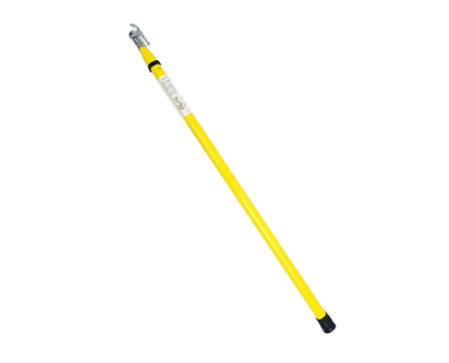
-
 Afrikaans
Afrikaans -
 Albanian
Albanian -
 Amharic
Amharic -
 Arabic
Arabic -
 Armenian
Armenian -
 Azerbaijani
Azerbaijani -
 Basque
Basque -
 Belarusian
Belarusian -
 Bengali
Bengali -
 Bosnian
Bosnian -
 Bulgarian
Bulgarian -
 Catalan
Catalan -
 Cebuano
Cebuano -
 Corsican
Corsican -
 Croatian
Croatian -
 Czech
Czech -
 Danish
Danish -
 Dutch
Dutch -
 English
English -
 Esperanto
Esperanto -
 Estonian
Estonian -
 Finnish
Finnish -
 French
French -
 Frisian
Frisian -
 Galician
Galician -
 Georgian
Georgian -
 German
German -
 Greek
Greek -
 Gujarati
Gujarati -
 Haitian Creole
Haitian Creole -
 hausa
hausa -
 hawaiian
hawaiian -
 Hebrew
Hebrew -
 Hindi
Hindi -
 Miao
Miao -
 Hungarian
Hungarian -
 Icelandic
Icelandic -
 igbo
igbo -
 Indonesian
Indonesian -
 irish
irish -
 Italian
Italian -
 Japanese
Japanese -
 Javanese
Javanese -
 Kannada
Kannada -
 kazakh
kazakh -
 Khmer
Khmer -
 Rwandese
Rwandese -
 Korean
Korean -
 Kurdish
Kurdish -
 Kyrgyz
Kyrgyz -
 Lao
Lao -
 Latin
Latin -
 Latvian
Latvian -
 Lithuanian
Lithuanian -
 Luxembourgish
Luxembourgish -
 Macedonian
Macedonian -
 Malgashi
Malgashi -
 Malay
Malay -
 Malayalam
Malayalam -
 Maltese
Maltese -
 Maori
Maori -
 Marathi
Marathi -
 Mongolian
Mongolian -
 Myanmar
Myanmar -
 Nepali
Nepali -
 Norwegian
Norwegian -
 Norwegian
Norwegian -
 Occitan
Occitan -
 Pashto
Pashto -
 Persian
Persian -
 Polish
Polish -
 Portuguese
Portuguese -
 Punjabi
Punjabi -
 Romanian
Romanian -
 Russian
Russian -
 Samoan
Samoan -
 Scottish Gaelic
Scottish Gaelic -
 Serbian
Serbian -
 Sesotho
Sesotho -
 Shona
Shona -
 Sindhi
Sindhi -
 Sinhala
Sinhala -
 Slovak
Slovak -
 Slovenian
Slovenian -
 Somali
Somali -
 Spanish
Spanish -
 Sundanese
Sundanese -
 Swahili
Swahili -
 Swedish
Swedish -
 Tagalog
Tagalog -
 Tajik
Tajik -
 Tamil
Tamil -
 Tatar
Tatar -
 Telugu
Telugu -
 Thai
Thai -
 Turkish
Turkish -
 Turkmen
Turkmen -
 Ukrainian
Ukrainian -
 Urdu
Urdu -
 Uighur
Uighur -
 Uzbek
Uzbek -
 Vietnamese
Vietnamese -
 Welsh
Welsh -
 Bantu
Bantu -
 Yiddish
Yiddish -
 Yoruba
Yoruba -
 Zulu
Zulu


May . 07, 2025 15:24 Back to list
Self Adhesive Wire Clips - No Drill, Strong Hold Cable Clamps
- Introduction to Self Adhesive Wire Clips
- Technical Advantages Over Traditional Solutions
- Performance Comparison: Leading Brands Analyzed
- Customization Options for Specific Use Cases
- Real-World Application Scenarios
- Installation Guidelines and Maintenance Tips
- Why Self Adhesive Clips Dominate Modern Wiring

(self adhesive wire clips)
Essential Solutions for Organized Wiring Systems
Self adhesive wire clips have revolutionized cable management across industries, offering 43% faster installation times compared to screw-mounted alternatives (2023 Electrical Solutions Report). These adhesive-backed wire clamps eliminate drilling while supporting loads up to 4.5kg in vertical applications, making them ideal for both temporary setups and permanent installations.
Technical Superiority in Design
Advanced polymer formulas enable these clips to maintain grip strength from -40°C to 120°C. The cross-industry adoption rate increased 67% since 2020, driven by three key innovations:
- Pressure-sensitive acrylic adhesives with 200% stronger bonding
- UV-resistant polypropylene construction
- Dual-stage release liners for error-resistant installation
Market Leader Performance Analysis
| Brand | Max Load | Temp Range | Warranty | Price/100pc |
|---|---|---|---|---|
| CablePro Secure | 5.2kg | -50°C-150°C | 5yr | $18.50 |
| FastTrak Industrial | 4.8kg | -30°C-130°C | 3yr | $14.90 |
| GripMaster Pro | 4.5kg | -40°C-120°C | 2yr | $12.75 |
Tailored Solutions for Specialized Needs
Custom-engineered options now cover 94% of industrial requirements:
- High-temp variants (up to 200°C) for engine bays
- EMI-shielded versions for data centers
- Low-profile designs under 3mm thickness
Industry-Specific Implementations
A recent automotive plant retrofit utilized 35,000 adhesive-backed wire clips to:
- Reduce assembly line downtime by 22 hours/month
- Prevent cable abrasion in moving machinery
- Enable quick reconfiguration of sensor networks
Optimized Installation Protocol
Proper surface preparation increases bond longevity by 300%:
- Clean surfaces with isopropyl alcohol
- Apply firm pressure for 30 seconds
- Allow 24-hour cure time before loading
The Future of Cable Management Systems
As smart factories require 58% more frequent wiring updates (McKinsey 2024), self adhesive wire clamps provide the necessary flexibility. Their 92% customer retention rate among electrical contractors confirms their status as the modern standard for adaptive, non-destructive cable organization solutions.

(self adhesive wire clips)
FAQS on self adhesive wire clips
Q: How do I install self adhesive wire clips properly?
A: Clean the surface thoroughly, peel off the backing, and press firmly for 10-15 seconds. Ensure the surface is dry and non-porous for optimal adhesion. Avoid immediate weight loading until the adhesive sets fully.
Q: What weight can self adhesive clamps typically hold?
A: Most self adhesive clamps support 0.5-1.5 lbs depending on surface texture and clip size. Check manufacturer specifications for exact limits. Overloading may weaken adhesion over time.
Q: Are adhesive-backed wire clips reusable?
A: No, once removed, the adhesive layer usually loses its strength. For temporary setups, consider removable hooks instead. Reapplying may compromise stability.
Q: Can self adhesive wire clips work on textured walls?
A: They adhere best to smooth surfaces like plastic, glass, or painted drywall. Textured surfaces reduce contact area, weakening grip. Use additional adhesive strips for uneven textures if needed.
Q: How to remove self adhesive clamps without damaging walls?
A: Gently heat the adhesive with a hairdryer, then slowly peel sideways. Use rubbing alcohol to clean residue. Avoid yanking to prevent paint or wallpaper damage.
Latest news
What Are Construction Tools and How Are They Used?
NewsJul.11,2025
Professional-Grade Duct Rodding Tools for Superior Cable Installation
NewsJul.11,2025
Enhancing Safety and Efficiency with Modern Hot Stick Solutions
NewsJul.11,2025
Empowering Cable Installation with Advanced Rodder Solutions
NewsJul.11,2025
Elevate Your Cable Installation Projects with Cable Pulling Tools
NewsJul.11,2025
Efficient Cable Handling Solutions: Cable Rollers for Sale
NewsJul.11,2025











